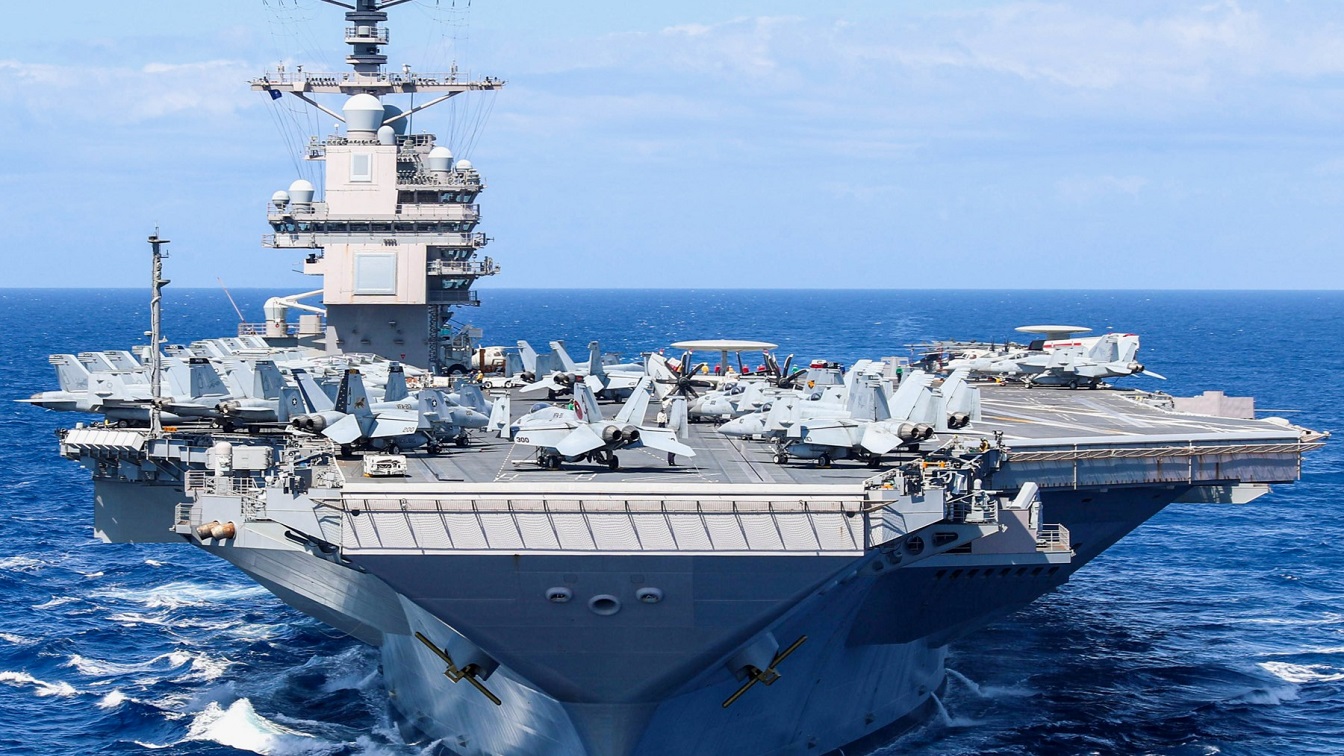First Simulated Hypersonic Strike on an Aircraft Carrier by China: Here Is What We Know
A paper detailing a recent war game was published earlier this month by the Chinese-language “Journal of Test and Measurement Technology,” and led by Cao Hongsong from the North University of China.
This is the first time the results of simulated hypersonic strikes against a U.S. carrier group have been made public, and it found that every U.S. surface vessel was “shattered” by the attack and eventually sank in the simulation.
The military planners had selected the U.S. Navy’s most superior carrier, the newly constructed CVN-78, the lead vessel of a new class of nuclear-powered carriers.
China Kills an Aircraft Carrier: What We Know About the Simulation
In the simulation, the carrier was escorted by a CG56 Ticonderoga-class cruiser the San Jacinto, as well as four DDG-103 Arleigh Burke-class Flight IIA guided missile destroyers.
All were reportedly equipped with advanced weapons and defensive measures, including radar systems to detect incoming threats.
The simulated U.S. warships were armed with the RIM-161E SM-3, an advanced anti-aircraft missile devised to intercept ballistic missiles either in the midcourse or terminal phase.
It employs a kinetic warhead that is meant to obliterate a target by colliding with a missile at high speed.
Other soft defense weapons to combat missile attacks, including decoys, chaff, and flare dispensers, were also employed in the simulations.
Deep Sixing the Fleet
Despite the defensive capabilities of a U.S. carrier strike group – once regarded as unsinkable by convention weapons – the simulation suggested it could be “destroyed with certainty,” even by a relatively small number of hypersonic weapons.
Two hypersonic anti-ship missile models with vastly different performances were unleashed in the simulation.
In the simulation, the Chinese military displayed “unusual prowess in their sophisticated launch strategy.”
It reportedly consisted of an intentionally complex three-wave attack meant to deceive and overcome the formidable defense systems of the U.S. carrier group.
Several constraints were apparently placed on the Chinese military, including a lack of access to spy satellites and a limited number of hypersonic missiles.
In the simulations, the hypersonic missiles launched from 1,240 miles from the carrier strike group had an 80 percent probability of hitting their target.
In contrast, another with an even greater range had a success rate of 90 percent.
However, some military experts still caution that the real-world performance of such weapons could differ greatly from what is predicted by simulation due to terrain, weather, and other unforeseeable factors, the SCMP also reported.
The researchers also suggested that government leaders and even the general public approach such simulations cautiously and rationally.
Big Ship But a Big Target?
Larger in size than the Nimitz-class carriers, USS Gerald R. Ford can operate with a smaller crew thanks to a greater emphasis on automation.
The warship will also see a reduction in maintenance requirements, as well as a crew workload reduction.
The flattop is capable of carrying upwards of 90 of the United States Navy’s most advanced aircraft, and that will include the F-35C Lightning II Joint Strike Fighter, F/A-18E/F Super Hornet, E-2D Advanced Hawkeye, EA-18G Growler electronic attack aircraft and MH-60R/S helicopter as well as unmanned air and combat vehicles.
In addition, Ford will also be able to recover and launch various Short Take-Off and Vertical Landing (STOVL) aircraft flown by the United States Marine Corps including the F-35B Lightning II.
Chinese Threat Taken Seriously
The potential of China’s hypersonic weapons as a potential “carrier killer” has been a grave concern for the U.S. military.
In the fall of 2021, General Mark Milley, chairman of the Joint Chiefs of Staff, said that the threat needs to be taken seriously following a test of a high-speed system earlier that year.
“What we saw was a very significant event of a test of a hypersonic weapon system,” Milley told Bloomberg TV. At the time, the U.S. – which is also working on hypersonic weapons – had not conducted a hypersonic weapon test of the sort that China had achieved.
“I think I saw in some of the newspapers, they used the term Sputnik moment,” he added. “I don’t know if it’s quite a Sputnik moment, but I think it’s very close to that. So it’s a very significant technological event that occurred, or test that occurred, by the Chinese. And it has all of our attention.”
The recent simulation may further get the attention of the Pentagon, as Russia has also been working to develop hypersonic weapons. However, it was just last week that Ukraine claimed it had shot down six Kinzhal hypersonic missiles that were fired at Kyiv.
Author Experience and Expertise:
A Senior Editor for 19FortyFive, Peter Suciu is a Michigan-based writer. He has contributed to more than four dozen magazines, newspapers, and websites with over 3,200 published pieces over a twenty-year career in journalism. He regularly writes about military hardware, firearms history, cybersecurity, politics, and international affairs. Peter is also a Contributing Writer for Forbes and Clearance Jobs. You can follow him on Twitter: @PeterSuciu.

